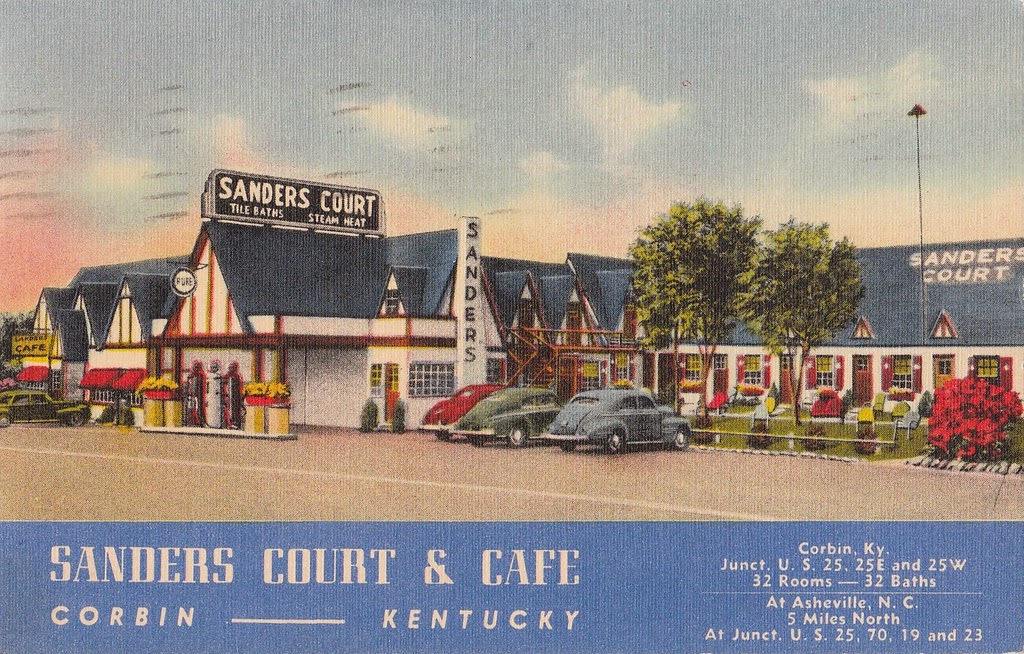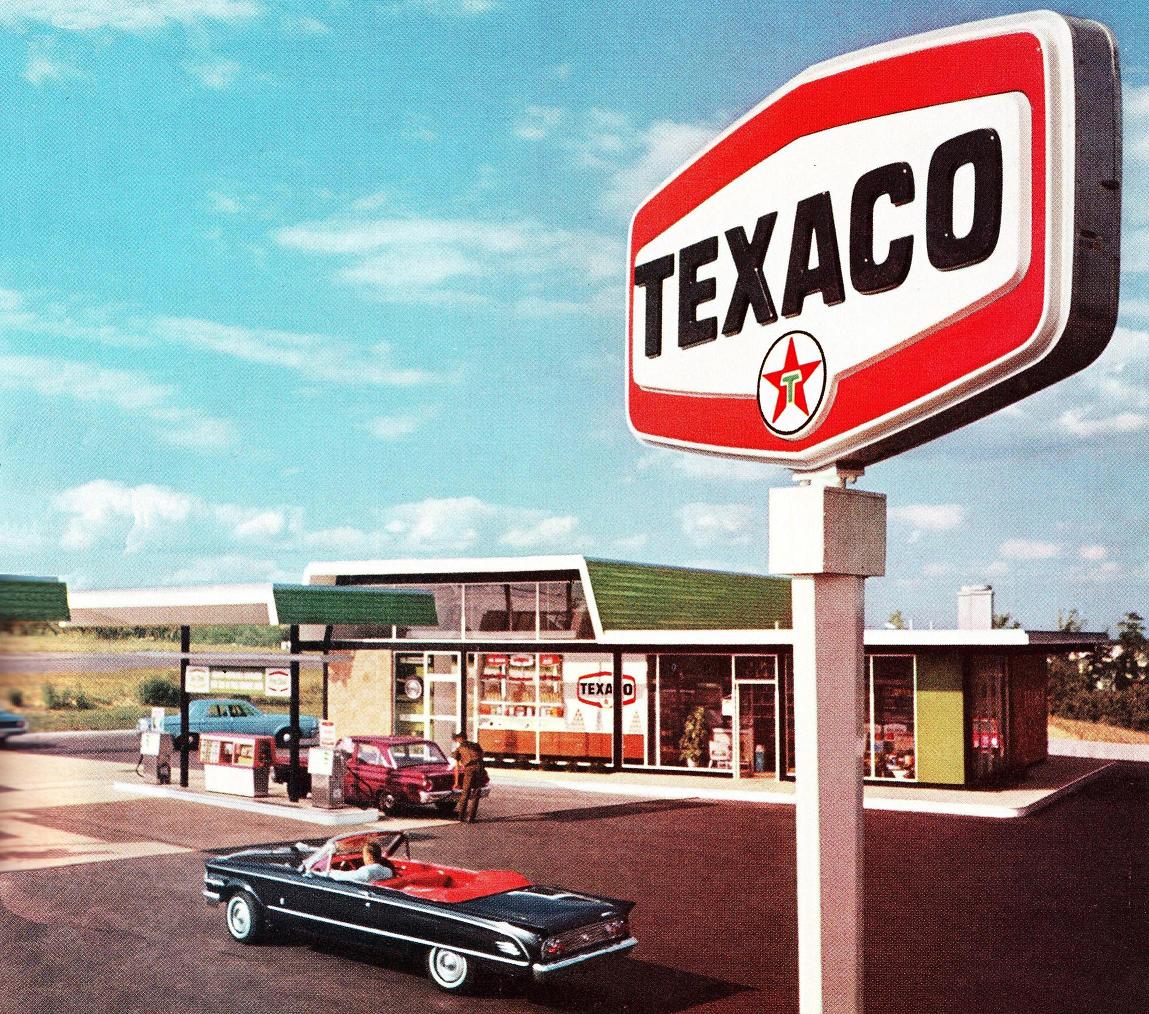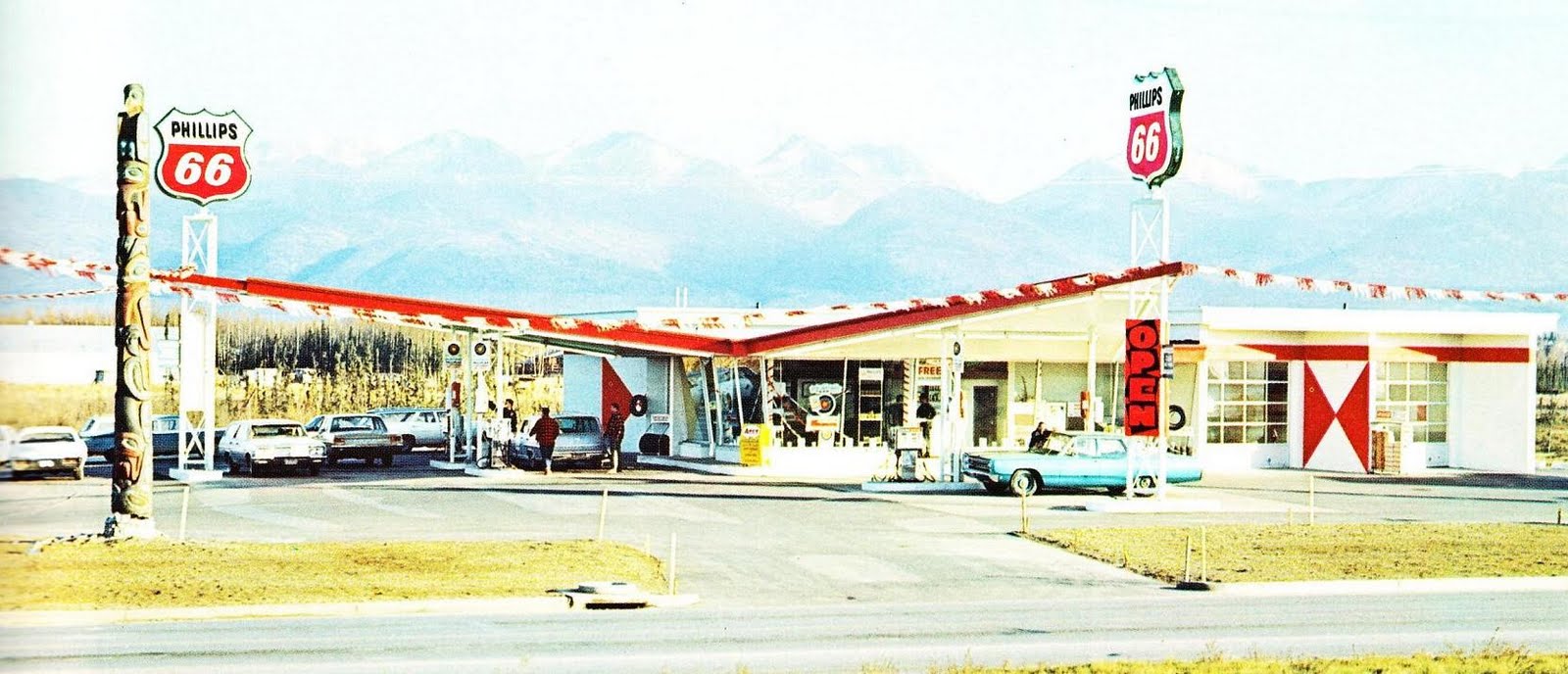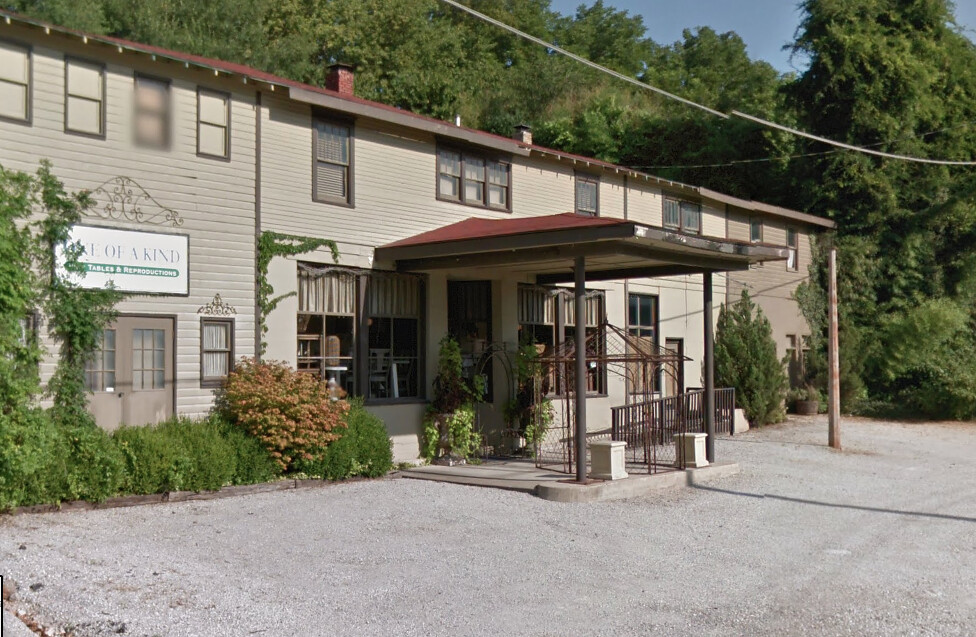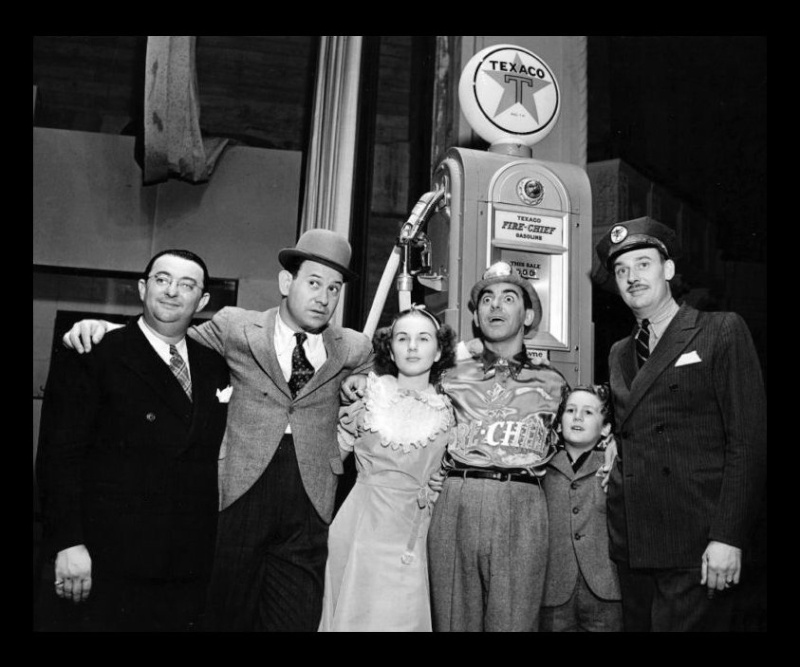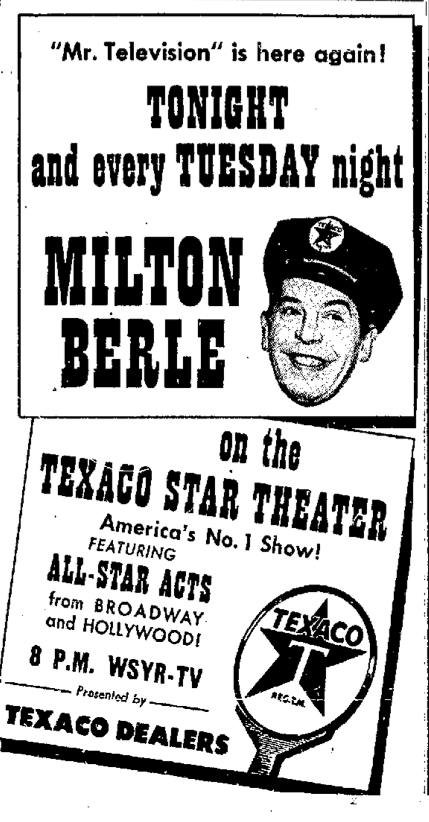1955mercury
One of the Regulars
- Messages
- 194
- Location
- South Carolina
Check out that Ford shop truck. Fender skirts and looks like air horns on top of the cab. It's probably got some kind of fancy add on hood ornament also. These were traveling bill boards back then. This photo looks to have been taken in the early 60's. There's a 1961 Chevy on the far right side, a 1959 Ford out front, the shop truck looks to be a 1960 or 61 and the International Harvester truck behind the 59 Ford.The Pure Oil cottage was designed by Carl Petersen, a man who had no formal architectural training whatever. He had worked for Gulf in the early twenties, and had tried to sell them the cottage concept, but they didn't like it. Petersen landed at Pure in 1925, and they loved the cottage -- they used it or modifications of it for over twenty years. Even when they went to the "oblong icebox" style station in the 1950s, they tried to incorporate an abstract suggestion of the cottage.

